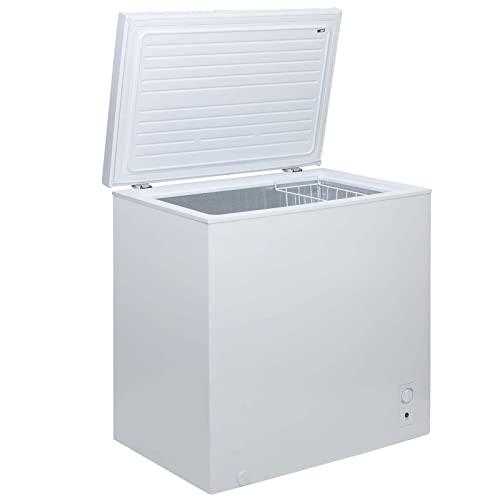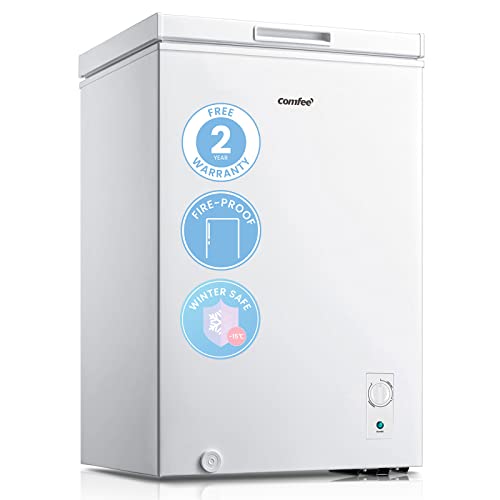Benefits of a Fridge With an Ice Maker
Many refrigerators include an ice maker either built into the 3 door fridge or in the freezer. This makes it easy to get cold, refreshing water. These refrigerators are usually more expensive than others however they can help you avoid the headache of filling and cleaning ice trays.
 The circuit of the icemaker sends current to an ice valve. The water flows through the mould and then freezes creating cubes.
The circuit of the icemaker sends current to an ice valve. The water flows through the mould and then freezes creating cubes.
Convenience
It is evident that having an ice maker in your refrigerator will help you save time. The maker fills the trays for large capacity Fridge you, saving you time. It is usually activated by a sensor which detects water levels in the freezer, and once it has reached the right temperature, the process of making ice begins. A valve opens and a cooling system directs water into molds for ice. A built-in thermistor monitors the ice to ensure that it is completely frozen, and when it is the valve shuts off and the ice is transferred from the molds to the storage bin.
This is also useful when you’re hosting guests. You’ll always have enough to ice, and you will avoid embarrassing situations when guests ask you for more ice, only to find that you’re not in. There are refrigerators equipped with an ice maker that has an ice maker built into the door. This makes it easy to serve water and get access to the frozen ice without opening the refrigerator.
Refrigerators that are equipped with Ice makers also consume less energy than conventional models. The ice maker uses only a tiny amount of energy to operate. Because they are used for a long time, you can save lots of money on your energy bills.
If you’re looking to lower your costs even more you can choose one that doesn’t require a cooling tower. These fridges with an ice maker are referred to as «direct cool» units. They make use of the refrigerant already cooling your refrigerator to create ice. They are more energy efficient than traditional ice makers and can cut the energy use of your home by as much as 25 percent. This will help you save money on utilities and reduce your carbon footprint.
Efficiency
An ice maker is a convenient option because that you don’t have to waste time filling and freezing ice cubes. Additionally, these devices provide an ongoing supply of fresh ice for you to use from the refrigerator or scoop into your cup whenever you need. This makes them more convenient than refrigerators which require you to go inside the freezer to pick up an ice container from the storage bin.
The majority of refrigerators that come with ice makers are combo models that include an icemaker in the freezer as well as a standard fridge compartment. You can also find refrigerators/freezers that are standalone with ice maker built into the door or at the back of freezer.
The ice maker in your refrigerator is typically powered by the main water supply of your home. A timed switch in the circuit sends a brief current down the electrical wires and then to the water valve. This opens the valve which then channels water into the molds for making ice. Once the ice-making process has been completed, the built-in thermometer signals the timed switch that the ice has cooled sufficiently to stop the flow of water into the molds. A motor spins a shaft that has arms that move ice into the bin that holds the ice.
Some ice machines permit you to select from two kinds of ice: standard ice cubes and crushed ice. This is the best option for hot weather when you’re trying to cut down on the time it takes to cool your drink.
Your freezer may have been set too low when your ice maker stops producing an ice or the resultant frozen ice appears small and discolored. Check your owner’s manual to find the manufacturer-recommended temperature and try setting it higher.
If your ice machine isn’t producing ice or only producing a tiny amount of ice it could be due to the water fill tubes are blocked. These tubes are essential for the machine to work effectively. They get their water from the home’s main water supply. Based on the condition of your home’s water, these tubes could develop mineral deposits and blockages over time. These can be removed by using a pipe cleaner or running the water line in your refrigerator through filters.
Water Dispenser
The water dispenser in refrigerators with icemakers allows you to get chilled, filtered drinking water without having to open the refrigerator’s 4 door fridge. Certain models let you add carbon dioxide to create sparkling water, or pour hot water for instant tea, coffee and more. These models usually cost more than fridges with ice makers, and they require a separate water line connection to access the water that gets melted and transformed into ice to enjoy.
In the 1980s, refrigerators started offering ice and drinking water dispensers. These were basic automatic ice makers that made one block of ice a day. A majority of refrigerators come with an ice maker and water dispenser built in.
The dispenser works by pulling cold water from the refrigerator’s internal plumbing and transferring it to a small water filter that removes particles and some basic contaminants. The water is then transported to an ice mould, where it transforms into one, solid block of ice. The ice is stored in a collection bin until it’s ready to be dispensed.
If you’re in the mood for an ice-cold glass of water a timed switch inside the circuit in your refrigerator sends a current through two wires connected to the dispenser. This current causes the solenoid to activate, which opens the water valve, letting in just enough water to create an Ice mold. The ice mold is typically an unplastic well that has several cavities that are connected. The valve then closes when the ice has been created. This allows the ice to fall off the mold and into the bin in the bin, where they wait to be dispensing.
Most problems with fridge ice or water dispensers can be solved with a little troubleshooting. For more in-depth information, refer to our Fridge Dispenser Troubleshooting article to learn about the most frequent reasons for these issues and how to fix these issues.
Use a traditional ice cube tray which can be filled at the kitchen sink as an alternative to refrigerator water dispensers and ice dispensers. These trays can hold up 25 cups and permit you to select the amount of ice to have at any given time.
Cost
The convenience of having an icemaker in your fridge comes at a cost. Refrigerators with ice makers generally cost more than those without because they have to be professionally installed and connected to a water line, and may require additional repairs or maintenance. Also, Large Capacity Fridge refrigerators that have ice makers use more energy.
The majority of fridges and freezers equipped with an ice maker have the option of making both standard ice cubes and crushed ice. A lot of them also offer a range of sizes and shapes to pick from so that you can personalize the ice you make according to your preferences.
People often get used to a certain type of ice, and are disappointed when they cannot find it in the grocery store or at a restaurant. When you have a fridge equipped with an ice maker you can avoid this problem by setting up your fridge to produce your preferred type of ice in a controlled manner.
It can be frustrating to find yourself running out of Ice if you’re a frequent drinker, or host Large capacity fridge gatherings. If you’re sitting on your own after a workout, chatting with your spouse after a long day or entertaining your family and friends at your home, you deserve to enjoy an ice cold drink whenever you want.
One of the primary benefits of having a fridge with an ice maker is that it offers peace of mind knowing you’ll have a constant supply of ice for any occasion. If the appliance fails, you will need to get a professional in to repair it.
The cost of a fridge repair or standalone repair to an ice machine varies based on the issue and the model of the appliance. However, here are some of the most frequently encountered issues:
 If your refrigerator is equipped with an ice maker that’s not producing ice It could be due to a blocked supply tube or faulty valves for water inlet. These components contain electrical components that can become damaged over time. A professional will charge you between $150 and $200 to replace them.
If your refrigerator is equipped with an ice maker that’s not producing ice It could be due to a blocked supply tube or faulty valves for water inlet. These components contain electrical components that can become damaged over time. A professional will charge you between $150 and $200 to replace them.
